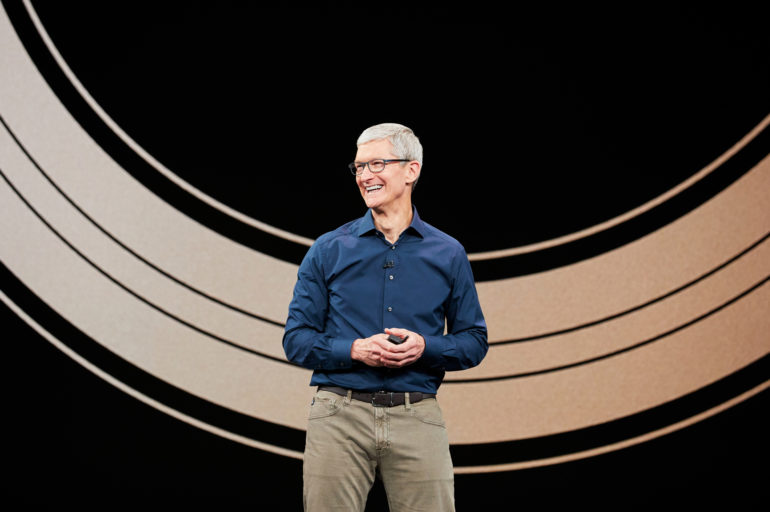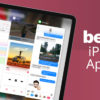Of all the stuff that Apple puts out — from ads to earnings reports to keynotes — the event that I believe gives us the best glimpse into what makes the company tick are its quarterly earnings calls.
Sure, all the Apple executives are highly skilled at appearing candid while at the same time not blurting out secret stuff, but it is nonetheless a time we get to hear CEO Tim Cook and CFO Luca Maestri speak and get shot (mostly softball) questions.
And it’s always interesting.
Must read: iOS 14.1 rolling out to iPhones, but no sign of a battery fix
Apple just posted a good quarter. For a quarter that didn’t feature a new iPhone, it was actually an exceptional quarter.
Let’s take a dive into the earnings call.
Strong demand for the old iPhone
Maestri: “While COVID-19 and social distancing measures impacted store operations in a significant manner, demand for iPhone remained very strong. In fact, through mid-September, customer demand for our current product lineup grew double digits, and was well above our expectations.”
This is fascinating. It’s like the echoes of previous iPhone releases were still ringing in people’s heads, and they went out to buy an iPhone even though there wasn’t yet a new one.
An iPhone for everyone
Cook: “We’re very bullish on this cycle, very bullish on it, because as I sort of step back from it and look at what we’ve now done, we have for the first time ever, we’ve launched four iPhones. And there is an iPhone for everyone there.”
Small, large. Cheapish to super expensive. This again, is interesting, because it signals that Apple has filled what is sees as a gap in the line — quite probably with the iPhone 12 Mini.
Supply constraints
Maestri: “.. despite supply constraints on iPad, Mac and Apple Watch throughout the quarter.”
Maestri: “Next, I’d like to talk about Mac; revenue was by far an all-time record at $9 billion, up 29 percent over last year and $1.6 billion above our previous record, in spite of supply constraints during the quarter.”
Maestri: “iPad performance was also very impressive, with revenue of $6.8 billion, up 46%, and our highest September quarter revenue in eight years despite supply constraints.”
So, the supply chain chatter about constraints were right.
No going back to “normal”
Cook: “I think the moves that have taken place to remote learning and remote work are not going to go back to normal, normal will become something different. Because I think people are learning that there are aspects of this that work well. And so, I don’t believe that we’re going to go back to where we were.”
Remote working and learning is, from Apple’s POV, here to stay.
Who said Mac was dead?
Cook: “These are tremendous numbers and as Luca said the September quarter was the all-time high for Mac in the history of the company, and by not by little bit by $1.6 billion.”
It’s a shame Apple doesn’t give unit sales, because it would be interesting to see this. Mac sales had been pretty flat for years, showing slight decline, but just as we saw in the PC market, COVID has been good for Macs too.
People have been buying and using Apple Services, a lot!
Maestri: “Turning to Services, as I said, we set an all-time revenue record of $14.5 billion. We grew strong double digits and set all-time records in App Store, Cloud Services, Music, Advertising and Payment Services. We also set an all-time record in AppleCare, as in-store traffic improved and we were able to support more customers. Our new services, Apple TV+, Apple Arcade, Apple News+, and Apple Card, are also contributing to overall services growth, and continue to add users, content and features. The key drivers for our Services growth, all continue to be moving in the right direction.”
It’s AppleCare that stands out to me above all here. It’s a clear indication of how important and valued Apple products have become during this time of pandemic, and that people want to insure against huge repair bills should something go wrong.
Wearables is huge
Maestri: “We set September quarter records in every geographic segment and for each of the three product categories; Wearables, Home and Accessories. As a result, our wearables business is now the size of a Fortune 130 company.”
For reference, at 130 is Synnex with a revenue of $23.7 billion. Starbucks is at 114. Tesla at 124. At 126 is Qualcomm. Broadcom is at 138.
Apple, as a whole, is at number 4.
So yes, huge.



